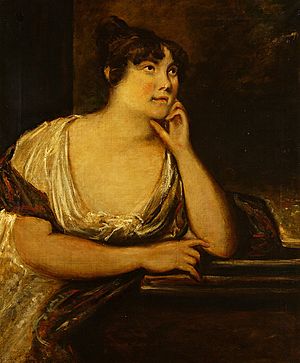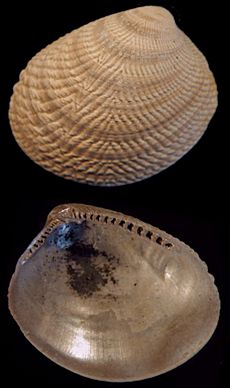Elizabeth Cobbold facts for kids
Quick facts for kids
Elizabeth Cobbold
|
|
|---|---|

Portrait attributed to George Frost
|
|
| Born |
Elizabeth Knipe
1767 London
|
| Died | 1824 |
| Occupation | writer and poet |
Elizabeth Cobbold (born Elizabeth Knipe, 1767–1824) was a talented British writer and poet. She also used the pen name Carolina Petty Pasty. Elizabeth was known for her novels, poems, and even her interest in geology.
Contents
Her Life Story
Elizabeth Knipe was born in London in 1767. When she was 23, in 1790, she married William Clarke. He worked for the customs in Ipswich. Sadly, William passed away less than a year later.
After becoming a widow, Elizabeth married John Cobbold, a brewer from Ipswich. This meant she became a stepmother to fifteen children! Over time, she and John had seven more children together. Even with such a big family, Elizabeth found time to write.
In 1803, she helped edit a book of poems by another writer, Ann Candler. Elizabeth was also very involved in helping others. In 1812, she started a group to provide clothes for young children. Later, in 1820, she organized a charity fair to raise money.
Creative Valentine's Day Cards
From 1806, Elizabeth Cobbold became famous for her special Valentine Day cards. She wrote verses for these cards herself. The verses were attached to paper that she had cleverly cut into beautiful shapes. People often said her paper-cutting skills were amazing!
Paintings of Elizabeth and her husband John were made by an artist named George Frost. Her son, Richard Cobbold, also grew up to be a well-known writer.
Elizabeth Cobbold: Early Geologist
Elizabeth Cobbold was also one of the very first people to study geology. Geologists are scientists who study the Earth's rocks and fossils. Elizabeth collected fossils from the Red Crag Formation near her home in Ipswich.
One of the fossils she found was a type of clam. It was named Nucula cobboldiae in her honor by a scientist named James Sowerby. This fossil is now kept in a museum in Australia. Another rare type of shellfish, the Acila cobboldiae, was also named after her. This shows how important her fossil discoveries were!
Her Published Works
Elizabeth Cobbold wrote many different books and poems. Here are some of her published works:
- Poems on various subjects. 1783.
- Six narrative poems 1787.
- The sword; or, Father Bertrand's history of his own times 1791.
- The mince pie, an heroic epistle 1800.
- Cliff valentines. 1813, 1814
- An ode on the victory of Waterloo 1815.
- Monody to the memory of Mrs. Byles 1818.
- Poems, with a memoir of the author [ed. Laetitia Jermyn]. 1825.


